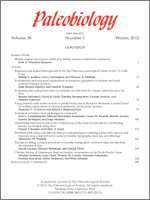Improvements in the perceived completeness of the fossil record may be driven both by new discoveries and by reinterpretation of known fossils, but disentangling the relative effects of these processes can be difficult. Here, we propose a new methodology for evaluating historical trends in the perceived completeness of the fossil record, demonstrate its implementation using the freely available software ASCC (version 4.0.0), and present an example using crown-group birds (Aves). Dates of discovery and recognition for the oldest fossil representatives of 75 major lineages of birds were collected for the historical period ranging from 1910 to 2010. Using a comprehensive phylogeny, we calculated minimum implied stratigraphic gaps (MIG range) across these 75 lineages. Our results show that a reduction in global MIG values of 1.35 Ga (billion years) occurred over the past century in avian paleontology. A pronounced increase in the average rate of global MIG reduction is noted in the post-1970s interval (290.5 Myr per decade) compared to the pre-1970s interval (31.9 Myr per decade). Although the majority of the improvement in the fossil record of birds has come from new discoveries, substantial improvement (∼22.5%) has resulted from restudy and phylogenetic revision of previously described fossils over the last 40 years. With a minimum estimate indicating that at least 1.34 Gyr of gaps remain to be filled between the predicted and observed first appearances of major lineages of crown Aves, there is much progress to be made. However, a notable tapering off in the rate of global MIG reduction occurs between 1990 and 2010, suggesting we may be approaching an asymptote of oldest record discoveries for birds. Only future observations can determine whether this is a real pattern or a historical anomaly. Either way, barring the discovery of fossils that substantially push back the minimum age for the origin of crown-clade Aves, new discoveries cannot continue to reduce global MIG values at the average post-1970s rate over the long term.
How to translate text using browser tools
1 January 2012
Quantifying historical trends in the completeness of the fossil record and the contributing factors: an example using Aves
Daniel T. Ksepka,
Clint A. Boyd
ACCESS THE FULL ARTICLE

Paleobiology
Vol. 38 • No. 1
Winter 2012
Vol. 38 • No. 1
Winter 2012




